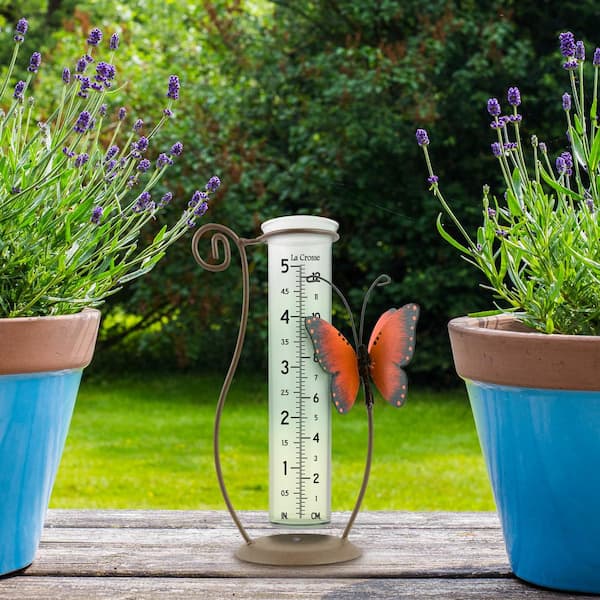The Rain Gauge: An Important Device for Keeping Track Of Rainfall Levels
Wiki Article
DIY Rainfall Gauge: Basic Steps to Make Your Own
Are you curious about tracking rains in your location? Developing your own DIY rain scale is a easy and efficient method to gauge and record precipitation. With simply a couple of typical materials and some standard steps, you can easily create your very own rain scale in your home. In this overview, we will certainly offer you with a detailed procedure to aid you create your very own rainfall gauge. No demand for any type of specialized expertise or equipment - this job can be finished by any person. By complying with these straightforward instructions, you will certainly have a reputable device to measure rainfall and add to your understanding of the neighborhood weather patterns. So, allow's start on making your DIY rainfall scale today!Gather Products
To start building your Do it yourself rain gauge, gather all the required products using a thorough checklist of products. Having the right materials on hand will make sure the successful production of your rain scale and permit for exact measurements of rains. Collecting these products ahead of time will simplify the building and construction procedure and guarantee that you have every little thing you need to produce your own Do it yourself rainfall scale.Prepare the Container

Mark the Measurement Increments
To precisely measure the amount of rainfall, accurately noting the dimension increments on your DIY rain scale is vital. Without accurate and clear markings, it would be challenging to establish the precise amount of rains collected in your rainfall scale. Below are the actions to note the measurement increments on your rainfall gauge.First, decide on the device of measurement that you wish to utilize. The most common systems for determining rains are millimeters and inches. Use a long-term marker or water-proof paint to note the increments on the side of your rain gauge when you have actually picked the system. For inches, you can note every quarter inch or every half inch, depending on your choice. For millimeters, you can note every 10 millimeters or every 20 millimeters.
When marking the increments, it is necessary to make certain that they are uniformly spaced and plainly noticeable. Utilize a ruler or measuring tape go now to guarantee accuracy and consistency. Additionally, make certain that the markings are immune to fading or abrading, as direct exposure to the elements might create them to wear away in time.
Area the Rain Gauge Outdoors
The rainfall gauge should be positioned outdoors to accurately gather rainfall data. The area picked for the rainfall gauge should be free and open from any type of obstructions that might possibly impact the dimension of rains. The Rain Gauge.Additionally, it is vital to position the rain scale on a steady surface, such as a degree ground or a strong message. This will certainly prevent any type of motion or tilting of the scale, which might cause incorrect measurements. It is additionally recommended to avoid placing the scale near any type of resources of synthetic water, such as sprinklers or water drainage systems, as this can hinder the accuracy of the measurements.
Display and Document Rain Information
Regular monitoring and recording of rainfall data is crucial for accurate information analysis and analysis. By keeping an eye on rainfall measurements, you can obtain important understandings into weather patterns, climate trends, and water source administration. To efficiently keep an eye on and record rains data, it is essential to establish a regular and preserve regular methods.Firstly, guarantee that your rainfall scale is placed in an open area away from challenges such as trees or structures that may block rains. In addition, ensure the rain scale is degree and firmly anchored to stop any type of movement that could influence the precision of the dimensions.

When videotaping the rains data, it is necessary to keep in mind the date and time of each measurement. Utilize a leader or a measuring stick to establish the rains depth in the rainfall scale, and record this info precisely.
To ensure the accuracy of see this site the measurements, it is suggested to clear the rain gauge after each recording. This will certainly prevent any type of overflow or evaporation from influencing subsequent dimensions.
Conclusion
Finally, producing a DIY rain scale is a useful and straightforward means to keep an eye on and tape-record rains information (The Rain Gauge). By following the steps laid out in this article, you can easily gather materials, prepare the container, note the measurement increments, and position the rainfall gauge outdoors. Frequently monitoring and taping rainfall information can supply beneficial information for various purposesHaving the best materials on hand will make sure the effective production of your rain gauge and enable for precise dimensions of rainfall.To accurately measure the amount of rainfall, precisely marking the dimension increments on your DIY rain scale is essential.The rain gauge ought to be put outdoors to properly accumulate rainfall data. The location picked for the rain gauge must be open and free from any blockages that can potentially influence the dimension of rains.In verdict, producing a DIY rain gauge is a easy and sensible way to keep track of and tape rains data.
Report this wiki page